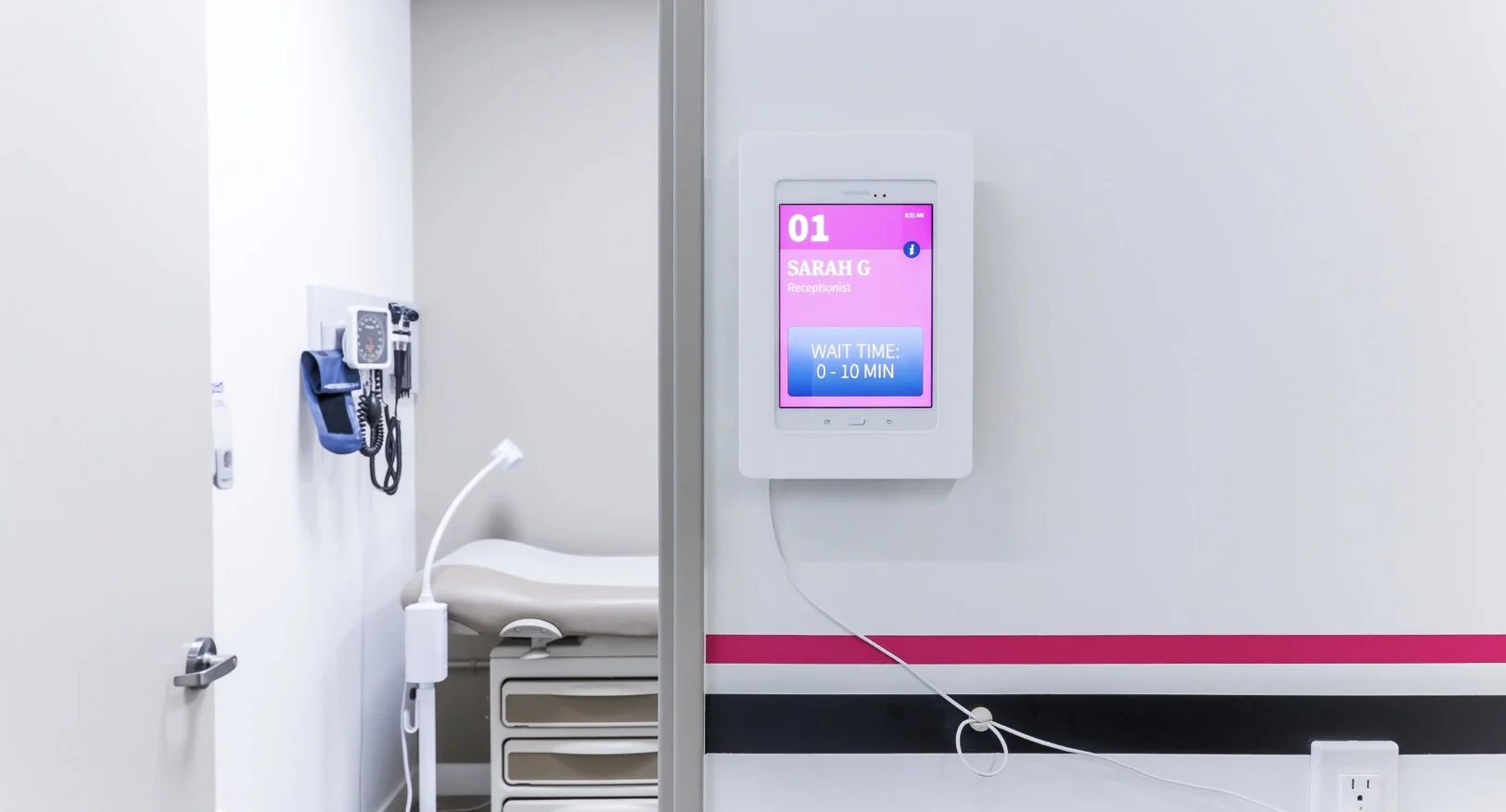Articles & Case Studies / Wall-Mounted Tablets
The Importance of Wall-Mounted Tablets
The Importance of Wall-Mounted Tablets
In clinics, efficiency and accuracy are critical. CHIME plays a vital role in streamlining operations and enhancing the patient experience. One of the key elements of CHIME is the use of tablets mounted outside exam rooms. These wall-mounted tablets serve as an essential tool for clinicians and staff, enabling seamless interaction with the system as they move in and out of patient rooms. But why are these tablets so important, and when can clinics consider alternative setups?
Why Wall-Mounted Tablets Matter
Real-Time Access for Clinicians and Staff - Mounted outside each exam room, these tablets allow clinicians to seamlessly check in and out of rooms, and provide additional workflow updates for staff, such as whether the room requires additional cleaning, deferred cleaning or admin can skip cleaning all together. This enhances the overall efficiency of the clinic.
Enhanced Workflow Management - For the CHIME system to function effectively, it needs constant interaction. The tablets enable real-time communication between staff and the system, keeping it up-to-date. If clinicians or staff don’t use the system reliably, the accuracy of room status and patient care workflows can quickly deteriorate, leading to inefficiencies and delays.
Ease of Use and Time-Saving - The positioning of tablets outside rooms allows for quick glances and updates without entering patient spaces, reducing interruptions and maintaining a smooth flow of care. This streamlined process saves precious time during the day-to-day operation of busy clinics, where every second counts.
When It’s Possible to Pivot Away from Wall-Mounted Tablets
While wall-mounted tablets are typically essential for clinic operations, there are a few scenarios where alternative setups may be more suitable—reducing installation costs while maintaining effectiveness.
Clinicians Using Dedicated Rooms - In clinics where clinicians consistently use the same exam room, having a tablet mounted on the wall outside the room may not be as critical. In these cases, placing a tablet inside the room, perhaps on the desk, can provide the same level of convenience and system interaction. Clinicians can still engage with the CHIME system directly, ensuring accuracy and workflow efficiency.
High-Touch Clinics with Mobile Devices - In high-touch clinics where patient escorts or assistants are responsible for updating patient statuses and managing the workflow, mobile tablets carried by staff may replace the need for stationary, wall-mounted devices. For example, some clinics, like those run by Telus, have adopted a model where patient escorts use mobile tablets to manage clinic operations on the go, offering greater flexibility and reducing the need for permanent fixtures.
To conclude, wall-mounted tablets remain a cornerstone of efficient clinic operations within the CHIME system, but there are specific instances where a pivot to other solutions can make sense. For clinics with static room assignments or high-touch workflows, cost-effective alternatives can be considered without sacrificing the effectiveness of the orchestration system. However, in most settings, the reliability, efficiency, and ease of use provided by wall-mounted tablets make them an essential component of any modern clinic’s operation.
Contact us to discuss your clinic's unique needs and determine the best configuration to optimize your workflow with CHIME.

